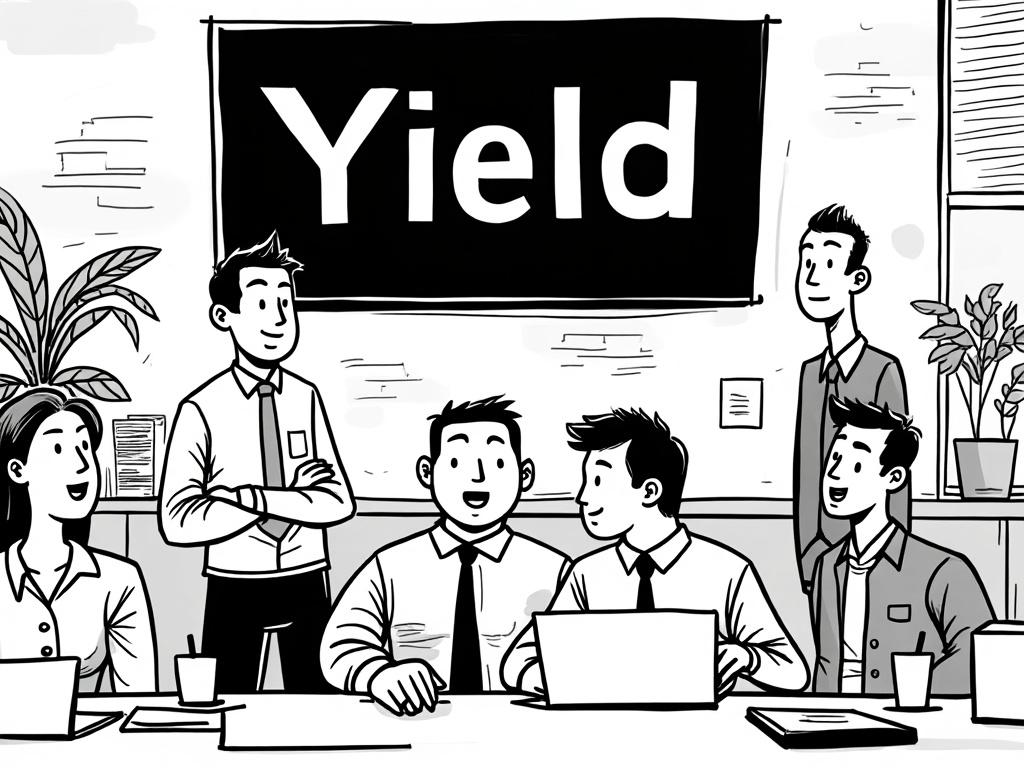
Germany Real Estate Market Trends and Outlook 2025: Your Strategic Investment Guide
Reading time: 12 minutes
Thinking about diving into Germany’s real estate market? You’re stepping into one of Europe’s most resilient yet complex property landscapes. Whether you’re a seasoned investor or exploring your first international property venture, understanding Germany’s unique market dynamics has never been more crucial.
Table of Contents
- Current Market Overview: The Reality Check
- Regional Performance: Winners and Challengers
- Investment Opportunities: Where Smart Money Flows
- Market Challenges and Strategic Solutions
- 2025 Outlook: Navigating What’s Next
- Your Strategic Investment Roadmap
- Frequently Asked Questions
Current Market Overview: The Reality Check
Let’s cut through the noise: Germany’s real estate market is experiencing a significant recalibration. After years of explosive growth, 2024 marked a turning point that’s reshaping investment strategies across the country.
The numbers tell a compelling story: According to the German Real Estate Association (IVD), residential property prices declined by an average of 8.2% in major cities during 2024, with some premium segments seeing corrections of up to 15%. But here’s what the headlines miss—this correction is creating unprecedented opportunities for strategic investors.
Key Market Indicators
German Real Estate Performance Snapshot
Price changes in major German cities (2024 vs 2023)
Dr. Andreas Schulten, Chief Economist at Berlin Hyp, recently noted: “We’re witnessing a healthy market correction rather than a collapse. The fundamentals—strong employment, stable demographics, and housing shortages—remain robust.”
The Interest Rate Impact
The European Central Bank’s aggressive rate hikes fundamentally altered Germany’s property landscape. Mortgage rates jumped from historic lows of 1.2% in 2021 to over 4.5% by late 2024. This shift eliminated speculative buyers while creating opportunities for cash-rich investors.
Real-world example: A €500,000 apartment in Munich that required a €2,100 monthly payment in 2021 now demands €2,850—a 35% increase that priced out many buyers but reduced competition for serious investors.
Regional Performance: Winners and Challengers
Germany’s real estate story isn’t uniform. While Berlin headlines grab attention, savvy investors are finding opportunities in unexpected places.
The Surprising Outperformers
Leipzig’s Renaissance: Often overlooked, Leipzig emerged as 2024’s star performer. Property values increased 3.2% while rental yields reached 5.8%—exceptional by German standards. The city’s tech sector growth, anchored by companies like Porsche’s electric vehicle facility, created sustained demand.
Dresden’s Steady Growth: This Saxon capital maintained price stability with 1.1% growth, supported by its semiconductor industry boom. AMD’s expanded operations and the region’s “Silicon Saxony” initiative provide long-term investment confidence.
The Premium Challenge
Munich and Frankfurt, traditional investment darlings, face headwinds. Munich’s luxury segment saw the steepest corrections, with properties above €1.5 million dropping 18%. However, this creates entry points for investors previously locked out of these markets.
| City | Price Change (%) | Rental Yield (%) | Investment Grade |
|---|---|---|---|
| Leipzig | +3.2 | 5.8 | A- |
| Dresden | +1.1 | 5.2 | B+ |
| Frankfurt | -3.2 | 3.1 | B |
| Munich | -9.1 | 2.8 | C+ |
| Berlin | -12.3 | 4.1 | C |
Investment Opportunities: Where Smart Money Flows
The current market correction hasn’t eliminated opportunities—it’s redistributed them. Here’s where astute investors are positioning themselves.
The Rental Market Renaissance
Germany’s chronic housing shortage ensures rental demand remains robust. With 4.7 million households seeking accommodation and only 2.1 million available units, rental properties offer compelling returns.
Strategic focus areas:
- University towns: Cities like Heidelberg and Freiburg maintain steady demand with yields averaging 4.8%
- Industrial hubs: Areas around major manufacturing centers offer stable tenant pools
- Suburban developments: Post-pandemic lifestyle changes favor suburban properties with garden access
Commercial Real Estate Opportunities
While residential markets correct, commercial segments present unique opportunities. Logistics properties, driven by e-commerce growth, show remarkable resilience. Warehouse facilities near major transport hubs command premium rents and maintain 95%+ occupancy rates.
Case study: A €2.3 million logistics facility in Düsseldorf’s cargo district, purchased in early 2024, generated 7.2% annual returns through multi-tenant pharmaceutical distribution contracts.
Renovation and Value-Add Strategies
Germany’s aging housing stock creates substantial value-add opportunities. Properties built before 1990 often lack modern energy efficiency standards, making them ideal candidates for green renovations that qualify for government subsidies.
The renovation advantage: Energy-efficient upgrades can increase property values by 15-25% while reducing operating costs by 30-40%. Government programs like KfW 261 provide low-interest loans up to €150,000 per unit.
Market Challenges and Strategic Solutions
Every opportunity comes with obstacles. Let’s address the three biggest challenges facing German real estate investors and how to overcome them.
Challenge 1: Regulatory Complexity
Germany’s property regulations can overwhelm newcomers. From Mietpreisbremse (rent control) to energy efficiency requirements, compliance is complex but manageable.
Strategic solution: Partner with local Hausverwaltung (property management) companies that understand regional regulations. Budget 8-12% of rental income for professional management—it’s insurance against costly compliance mistakes.
Challenge 2: Financing Constraints
Higher interest rates and stricter lending criteria have tightened financing options. German banks now require 25-30% down payments for investment properties, up from 15-20% previously.
Strategic solution: Explore alternative financing structures:
- Portfolio financing: Bundle multiple properties for better rates
- International lenders: European banks often offer competitive terms for German properties
- Joint ventures: Partner with local investors to share financing requirements
Challenge 3: Market Timing
With prices declining, timing entry points becomes crucial. Many investors hesitate, fearing further drops.
Strategic solution: Adopt a dollar-cost averaging approach. Instead of making large single purchases, invest systematically over 12-18 months. This strategy reduces timing risk while building a diversified portfolio.
2025 Outlook: Navigating What’s Next
Looking ahead, several factors will shape Germany’s real estate landscape in 2025 and beyond.
Economic Fundamentals
Germany’s economic resilience remains a cornerstone of property investment appeal. Despite challenges, unemployment stays below 6%, and the country’s export-driven economy continues attracting international businesses and workers.
Key drivers for 2025:
- Green transition investments: €500 billion committed to renewable energy infrastructure
- Digital transformation: Major tech companies expanding German operations
- Demographic stability: Immigration offsetting aging population trends
Policy Implications
The German government’s housing initiatives will significantly impact markets. The commitment to build 400,000 new units annually addresses supply shortages while potentially moderating price growth in high-demand areas.
Investor implications: New construction will primarily target affordable housing segments, leaving premium and mid-market opportunities for private investors.
Interest Rate Trajectory
ECB policy normalization suggests rates will stabilize around 3.5-4% through 2025—higher than the 2010s average but manageable for quality investments. This environment favors experienced investors over speculators.
Your Strategic Investment Roadmap
Ready to navigate Germany’s real estate opportunities? Here’s your actionable roadmap for success in this evolving market.
Phase 1: Market Intelligence (Months 1-2)
- Identify 3-5 target cities based on your investment criteria and risk tolerance
- Establish relationships with local brokers, property managers, and legal advisors
- Secure pre-approval for financing to understand your purchasing power
- Research local rental markets and tenant demographics in your target areas
Phase 2: Strategic Positioning (Months 3-6)
- Begin systematic property evaluation in your chosen markets
- Focus on properties with renovation potential or below-market pricing
- Negotiate aggressively—current market conditions favor buyers
- Consider properties that qualify for government energy efficiency incentives
Phase 3: Portfolio Building (Months 7-18)
- Execute your first purchase and establish operational systems
- Reinvest cash flow into additional properties using proven criteria
- Build relationships with reliable contractors for renovation projects
- Monitor market trends and adjust strategy based on performance data
The German real estate market’s current recalibration isn’t a crisis—it’s a redistribution of opportunity. While headlines focus on price declines, smart investors recognize that today’s challenges create tomorrow’s success stories. The question isn’t whether to invest in German real estate, but how to position yourself strategically in a market that rewards preparation and punishes speculation.
Will you be ready when the market turns? The investors who thrive in the next cycle are making their moves today.
Frequently Asked Questions
What’s the minimum investment required for German real estate?
For residential investment properties, expect to invest at least €150,000-200,000 in secondary cities, with primary markets like Munich or Frankfurt requiring €400,000+ for quality properties. Factor in 25-30% down payment requirements, plus 8-12% transaction costs including notary fees, taxes, and broker commissions. Many successful investors start with smaller cities to build experience and capital before moving to premium markets.
How do German rental laws affect investment returns?
German tenant protection laws are strict but predictable. Rental increases are limited to 20% over three years in most areas, with rent control (Mietpreisbremse) applying in high-demand cities. However, these regulations create stability that appeals to long-term tenants, reducing vacancy rates and turnover costs. Energy-efficient properties and new constructions often qualify for higher rents, making renovation strategies particularly attractive.
Should foreign investors be concerned about currency and political risks?
Germany offers exceptional political and economic stability within the EU framework. Currency risk is minimal for Euro-zone investors, while non-Euro investors can hedge through various financial instruments. The country’s strong rule of law, transparent legal system, and EU membership provide additional protection. Political risks are low, with consistent pro-business policies across different government coalitions. Most international investors consider German real estate a “safe haven” asset comparable to government bonds but with superior returns.

Article reviewed by Anna Mayer, Residential Property Investment Advisor | Luxury Market Specialist, on July 7, 2025
